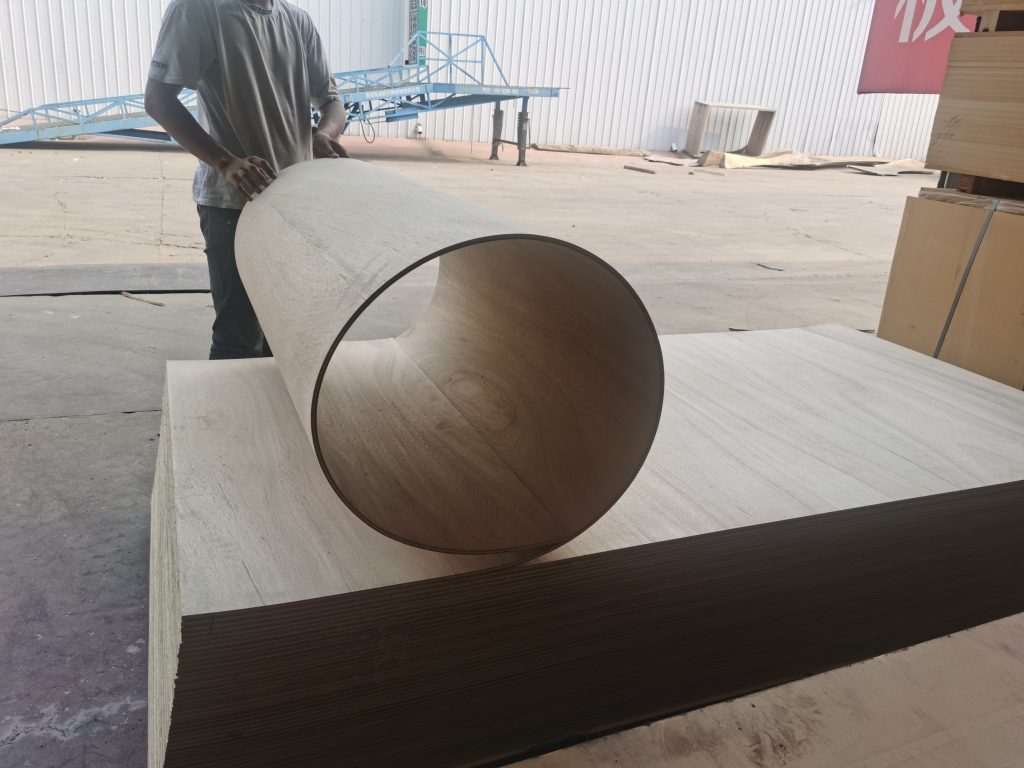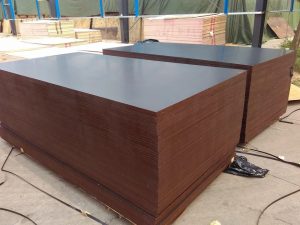Flexible plywood is made from three plys of wood. It can be shaped easily and is inexpensive. You’ll find out how it was used to build furniture in the 1850s. This article will give you an overview of how flexible plywood is made and how it differs from traditional wood.
It is made from hardwood
Flexible plywood is a type of hardwood that can be folded to a certain thickness for a particular purpose. It is made to be thick enough to fold easily, but not too thin that it cannot support the weight of the furniture. The properties of Flexible Ply are determined by the type and quality of the wood used. For example, AK/Apple plywood uses Keruing veneers to create Flexi ply that is considered an architect’s dream material.
Flexible plywood is similar to regular plywood, and is made by gluing thin layers of wood together. This process increases the rigidity of the plywood by pressing the grains perpendicular to the surface. The resulting material is flexible enough to withstand bends and curves. Because it is flexible, it is suitable for many applications, from coating curved columns and arches to cabinets and furniture parts. It is also ideal for curved staircases and stages, as well as interior architecture.
Flexible plywood is another popular type of wood. It can be bent into various curvy shapes without cracking or breaking. However, it must be finished well to prevent it from absorbing moisture. Otherwise, it will begin to crack and deform. For this reason, it is best to have plywood with a surface finish that is resistant to moisture.
There are several types of plywood, each with its own advantages and disadvantages. The types of plywood are chosen for their specific purposes and features. Softwood plywood, for example, is made of spruce and pine. Hardwood plywood, on the other hand, is made of hardwood veneer. Softwood plywood is generally stronger and less susceptible to warping than hardwood plywood. It is also less likely to shrink and is more resistant to cracking. It is commonly used for furniture such as cabinetry, television units, and dressers.
It is cost-effective
Flexible plywood is a cost-effective way to construct curved and complex structures without having to use expensive wood or special equipment. It is also durable, waterproof, termite-resistant, and moisture-resistant. This type of plywood can also be easily glued, laminated, or veneered.
Typically, flexible plywood is used in shopfitting and furniture where curved surfaces are required. It is available in two main types: true flexible plywood and thin plywood. The former is manufactured from thin sheets and is much more bendable than the latter. Flexible plywood is often used for modular kitchen cabinets and wardrobes.
The prices of plywood are usually determined by the thickness and grade of the material, as well as the location in which it is purchased. These prices vary from brand to brand and are typically quoted per square foot. Different types of plywood may have different price ranges, so it’s important to know the price range before purchasing the material.
MDF is generally cheaper than plywood, but the cost of this material depends on the grade. Higher grades are more expensive than lower grades, but they are more durable and show off the natural hardwood grains. Lower grades are primarily used for subflooring and construction work. Prices are usually listed by thickness, so that a sheet of Grade B-BB plywood costs $10 on Amazon.
Another benefit of flexible plywood is its flexibility. It can cover a larger surface area and does not require continuous slicing, which reduces waste and minimizes wood waste. It is also a great choice for projects that require wooden materials. There are many types available and each is beneficial to different projects.
It can be shaped easily

Flexible plywood can be shaped easily and is ideal for creating intricate designs. This type of wood can easily bend in both the long and cross grain directions. When bending the plywood, you should apply more pressure to the inside part of the bend rather than the outside. This allows you to create the curve you’re looking for with ease.
This type of plywood is also highly flexible, which makes it an excellent choice for making custom furniture. Because it can be easily bent, this material is ideal for creating curved tables, shelves, and cabinets. It is lightweight and can be easily laminated, which makes it easy to work with. It can be used for furniture pieces, stage sets, spiral staircases, and interior architecture. Flexible plywood is ideal for all kinds of designs, from cabinets to stage sets.
Another great feature of flexible plywood is its ability to bend without breaking. It’s ideal for making furniture with curved surfaces, since it’s flexible enough to bend without cracking. Unlike normal plywood, it can be twisted into almost any shape. Flexible plywood also does not chip, crack, or peel, and it can easily be bent into any shape you need.
When bending flexible plywood, it is important to ensure that you get the right kerf width. If the kerf width is too wide, the plywood will bend more easily and may not stay in the desired shape. When using a radial arm saw, make sure to cut a kerf slot that is just short of the face veneer. The kerf should be deep enough to allow the plywood to bend, but not so deep that it breaks. Before using flexible plywood, it is a good idea to practice bending on scrap wood first.
Flexible plywood is more expensive than regular plywood, so you need to consider the price before making a purchase. You can save money on materials by using double or triple layers of flexible plywood. However, this material must be used in multiple layers, which is why it is more expensive. The price of flexible plywood depends on the brand, thickness, and quality. A good quality 6 mm flexible plywood will cost about Rs. 40 to 60 per square foot.
It is susceptible to water damage
There are several ways to protect plywood against water damage. One option is to use waterproof paint. You can apply two coats of paint to plywood and let each dry before applying the next. This type of paint will last a very long time, but you will need to reapply it periodically to maintain its water resistance. Another option is to use an epoxy. Epoxy provides superior waterproofing protection to plywood, and lasts longer than paint.
Water damage to plywood can result in warping and rot. This is a common problem that occurs when plywood gets wet. Water can corrupt the wood underneath, causing it to warp and expand. This can be particularly problematic where screws or nails are used. When this happens, the plywood sheets may come loose from the nails or screws and will be useless for building purposes.
Another common problem with plywood is its ability to absorb water. When exposed to water, the glue holding the pieces together will deteriorate. This can lead to a weak, sagging floor. This problem can also be solved by purchasing pressure-treated plywood. Pressure-treated plywood is treated with 160 pounds of pressure to protect it against rot and moisture. Nevertheless, it is not waterproof.
Another option for plywood is plyboard, which is often used for larger projects. Plyboard is a good option, but it has less water resistance than plywood. This material is also susceptible to water damage and is notorious for holding water. There are two types of plywood: structural and interior. Structural plywood is used for roof bracing and beams, while interior plywood is great for home furniture.
If you plan to use plywood in a high-moisture area, it is best to waterproof it. This prevents costly water damage and can also prevent rot. There are a few ways to waterproof plywood, depending on the type of plywood.

